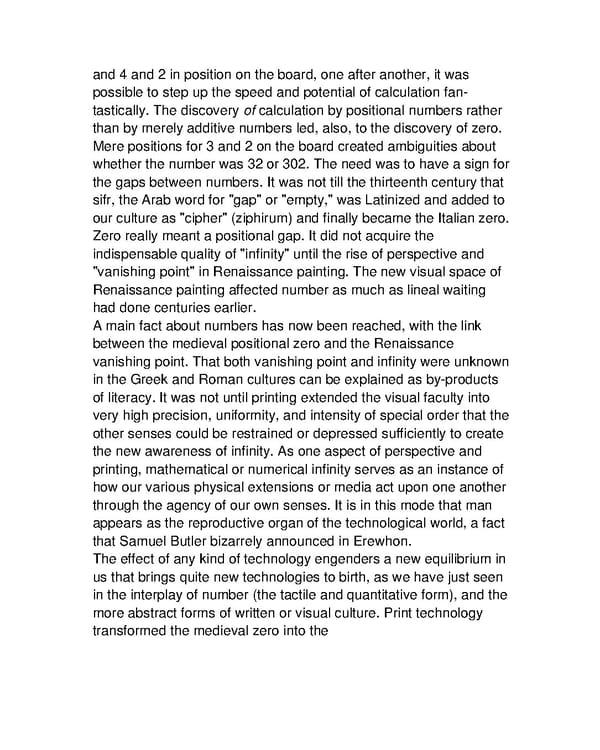and 4 and 2 in position on the board, one after another, it was possible to step up the speed and potential of calculation fan- tastically. The discovery of calculation by positional numbers rather than by merely additive numbers led, also, to the discovery of zero. Mere positions for 3 and 2 on the board created ambiguities about whether the number was 32 or 302. The need was to have a sign for the gaps between numbers. It was not till the thirteenth century that sifr, the Arab word for "gap" or "empty," was Latinized and added to our culture as "cipher" (ziphirum) and finally became the Italian zero. Zero really meant a positional gap. It did not acquire the indispensable quality of "infinity" until the rise of perspective and "vanishing point" in Renaissance painting. The new visual space of Renaissance painting affected number as much as lineal waiting had done centuries earlier. A main fact about numbers has now been reached, with the link between the medieval positional zero and the Renaissance vanishing point. That both vanishing point and infinity were unknown in the Greek and Roman cultures can be explained as by-products of literacy. It was not until printing extended the visual faculty into very high precision, uniformity, and intensity of special order that the other senses could be restrained or depressed sufficiently to create the new awareness of infinity. As one aspect of perspective and printing, mathematical or numerical infinity serves as an instance of how our various physical extensions or media act upon one another through the agency of our own senses. It is in this mode that man appears as the reproductive organ of the technological world, a fact that Samuel Butler bizarrely announced in Erewhon. The effect of any kind of technology engenders a new equilibrium in us that brings quite new technologies to birth, as we have just seen in the interplay of number (the tactile and quantitative form), and the more abstract forms of written or visual culture. Print technology transformed the medieval zero into the
 Understanding Media by Marshall McLuhan Page 129 Page 131
Understanding Media by Marshall McLuhan Page 129 Page 131